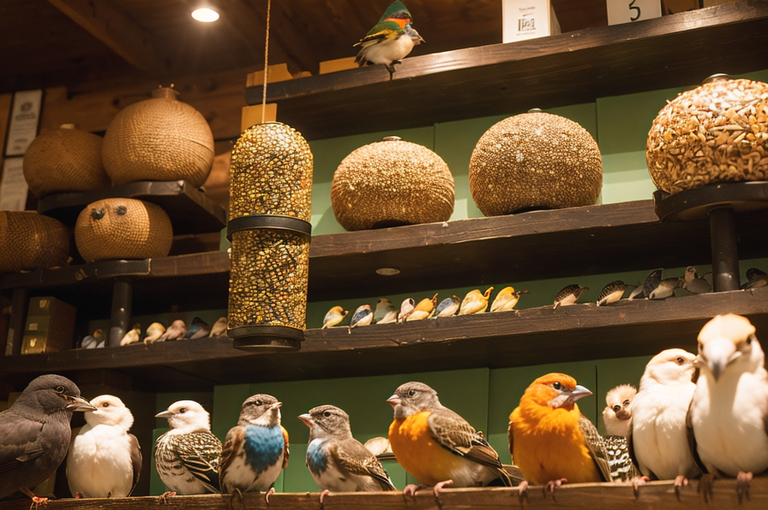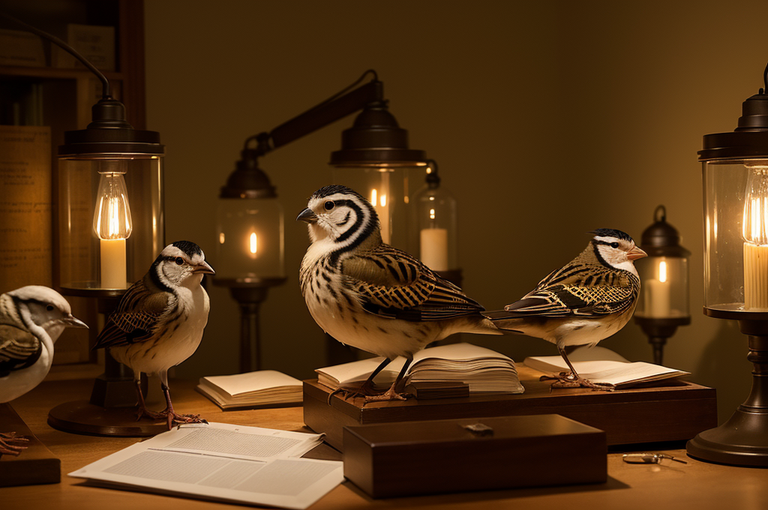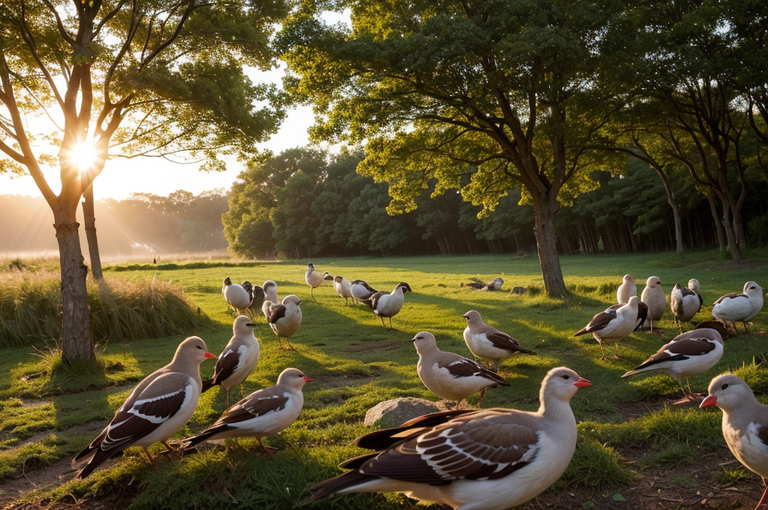The Balancing Act: Understanding the Pros and Cons of Feeding Wild Birds

The article discusses the ethical implications, risks, and benefits of feeding wild birds, noting potential behavioral changes and disease spread. It underscores the need for comprehensive data to evaluate the overall impact.
Introduction to Wild Bird Feeding
I often start my day, like the early born lark, with a warm beverage in hand and a sense of anticipation bubbling within, as I venture towards my small, urban sanctuary a specially reserved spot for feeding wild birds. As a reflection upon the legacy of birdfeeding in America, which has spanned over a century and saw unprecedented popularity during the recent pandemic, it’s an activity that I believe is tightly knotted with our intrinsic love for nature 🌳🕊️⛅.
History and Popularity of Feeding Wild Birds
I can’t help but admit a certain fascination for understanding the deep rooted history of birdfeeding that emerged in America. This passion has been a focal point for millions, portraying an accessible way for humans to engage directly with the wildlife, even in bustling urban environments.
Understanding the Bird-Human Connection
For me, it’s not just about setting out seeds for the fluttering residents of my garden. It’s about that intimate connection and interaction that unfurls when I observe them closely, ingrained with a child like wonder. I’ve often asked myself, what do birds eat in the wild? and the answers have continually unfolded in the form of unique insights that contribute to my persistent pursuit of avian truths.
The Controversy Around Feeding Wild Birds
However, within this context lies an ongoing, nuanced debate. Balancing the potential benefits and harmful effects of feeding wild birds can sometimes create a pendulum of disagreement among nature enthusiasts and scholars alike. The complexities of this controversy are stark, forcing us to consider, among other factors, the exact nature and manner of our interaction with these magnificent creatures. After all, even the most well intentioned gestures can sometimes lead to unforeseen consequences.
Regardless, the allure of wild birds shall always continue to captivate and inspire, fueling my insatiable curiosity, and etching evermore interesting chapters within my personal and professional journey. Through the rise and fall of the lark, my pursuit of avian truth remains undeterred, the fluttering feathers of my fervor for our feathered friends never ceasing to dance in the dawn’s early light.

The Benefits of Providing Meals for Our Feathered Friends
Ah, the benefits of feeding wild birds! It’s a privilege and a pleasure to offer nourishment to our feathered friends and, as an added bonus, it greatly benefits them too. Now, you may be asking yourself, what do wild birds like to eat? Well, they have a rather gregarious palate ranging from seeds, fruit, insects, and more. And it appears there’s more to bird feeding than meets the eye. Allow me to shed light on this.
A Helping Wing During Testing Times
Birds, like us, endure challenging weather conditions. When mother nature flexes her muscles, it can leave the bird population gasping for food, particularly during harsh winters. Providing food can help our feathered buddies fly through these tough times, ensuring they don’t go to sleep on an empty stomach.
Balancing the Scales of Habitat Destruction
Unfortunately, humanity’s exponential growth has led to an unfortunate side effect – the destruction of natural habitats. The birds bear the brunt of our expansion. Feeding them helps to offset some of these negative consequences, providing an alternate source of sustenance when their natural food source is compromised.
Cultivating the Human-Nature Bond
One of the unexpected joys of my adventurous career has been the connections I’ve fostered with the avian world. When you begin to feed wild birds, you start on a beautiful journey of fostering environmental awareness and deeper appreciation for these awesome creatures. And it’s a bond that ripples out, encouraging others to develop similar connections.
The simple act of bird feeding is so much more than offering a casual snack – it’s extending a helping hand to nature, building connections, and invoking a sense of responsibility within us to protect these magnificent creatures and their habitats. Feed a bird, and who knows, you might just learn to fly a bit yourself! 🦅

Potential Risks of Feeding Wild Birds
Feeding our feathery friends can seem like the noblest gesture us humans can do, but it is riddled with unforeseen risks. In our well meant actions, we may inadvertently alter the natural behaviors of these wild birds. As an ornithologist, I’ve been in the field enough to understand that while feeding could perhaps beautify our mornings with choruses and fluttering wings, it could also lead to some birds developing a worrisome dependency on humans. In essence, we might be disrupting their inherent survival skills, leading them astray from mother nature’s plan.
Alteration of Natural Bird Behavior
In my years as a wild bird rescue fort worth as a wildlife photographer, I’ve noticed that many birds fed by humans tend to develop nesting and migration patterns that revolve around these human built feeders. Skirting on the edge of domesticity, their wild instincts make room for these learned behaviors.
Health Consequences to Birds
It’s a sight for soaring hearts, watching a bird pecking at the feed we’ve left. However, it’s essential to remember that not all human food is bird safe. A crumb to us might be a feast for them, but it could lead to severe indigestion or even diseases, especially if feeders are not diligently maintained.
Impact on Predatory Patterns and Bird Collisions
In their unassuming quest for a free lunch, the sweet winged creatures often put themselves at risk. The gathering of birds at feeding sites might allure unwelcome attractions such as hawks, while flight collisions are more frequent around densely located birdhouses. At the end of the day, feeding birds might seem like a heartwarming moment of connection, but the reality is structured evidently in the ornithological world it is not only unnecessary but potentially harmful. As enrapturing as their enchanting tweets and vibrant plumage might be, the best way to love these birds is to respect their wild instincts.

Ecological Impact of Feeding Wild Birds
Feeding wild birds, especially during the harsh chills of winter, is a practice that many humans find heartening. It often occurs in environments already marked by our influence 🏡—from bustling city parks to serene suburban backyards. But have you ever pondered on what do wild birds eat in undisturbed habitats? And the question that strikes me more as an ornithologist: how does this seemingly innocuous habit affect our feathered friends and the ecosystems they inhabit?
Possible Ecosystem Changes due to Winter Bird Feeding
As birds gather around our benevolently filled feeders, the normally quiet winter landscape comes alive with fluttering wings and tuneful chirps 🐦. But this could result in an amplified bird population, exceeding nature’s capacity. Such an increase could see emerging insect populations wane as the overabundance of birds devour more than the ecosystem can naturally replenish.
Effect of Human Intervention on Bird Feeding Ecosystems
There is a delicate complexity interwoven in every ecosystem–from the towering trees and the skittering squirrels to the smallest of hummingbirds. Every feeding choice, every avian interaction can shift the ecological balance. Thus, our goodwill in feeding wild birds might be shaping ecosystems in ways we are yet to fully comprehend.
The Uncertainty of the Overall Impact of Bird Feeding on Ecosystems
Just like an unexpected bird sighting, the precise impact of feeding wild birds, particularly in winter, remains unclear and elusive. One could think that we’re simply providing a helping hand to our avian neighbors during harsh seasons. Or it could swing the other way, causing subtle disruptions that ripple across the ecosystem degrees of impact vary, perhaps negligible, perhaps significant, much like a whispering wind or a roaring storm 🌪️.
So in the midst of this uncertainty, I plead for careful study, empathy, and respect for nature’s crafted balance while we unearth the consequences of our well meant actions.
Needed Future Considerations and Studies
Fully embracing the song my feathered friends in the forest serenade me with, I am reminded of the diligence needed in our quest to feed the beautiful creatures in our world. But do you know what do birds eat in the wild? It’s imperative we strive for ethically responsible bird feeding. The dance of feeding wild birds requires an equal give and take all with eyes for their best interest. It calls for absolute cleanliness and a rich assortment of nutrient packed feed that mirrors what wild birds like to eat, thus minimizing any potential harm.
Emphasis on Ethical Bird Feeding
Much like the rhythmic flapping of a hummingbird’s wings, each feeding operation holds infinite possibilities. From my expedition to the wild bird rescue fort worth, I can affirm that meticulous planning should be coupled with actions that uphold the well being of our avian friends, particularly in their natural habitat. Recalling what do wild birds eat a myriad of seeds, fruits, insects can offer clues to satisfying their diets.
Call for Comprehensive Research
Their refrains echo, calling for a more in depth, comprehensive research. Yea, our feathered friends remain an enigma in myriad ways. Enigmatic, yet enchanting. As fascinating members of the ecosystem, their habits, ranging from dietary patterns to migratory patterns under various climate changes, hold treasures of knowledge yet to be unfurled.
Balancing Bird Feeding with Ecosystem Preservation
Ever observed a bird soaring high, basking in the freedom of its natural habitat? One cannot help but marvel. To ensure their freedom is not curtailed and food habits are not hampered, it’s crucial to balance bird feeding with efforts to conserve and restore these natural habitats.
Through the looking glass of future considerations and studies, I reflect back on the mosaic of their existence. A testament to my incessant fascination with birds, my narrative here underlines the pressing need to conduct more research in the domain of bird feeding, facilitating a harmonious balance between our desire to feed and the urgency to preserve their ecosystems. Long may their songs continue to reverberate through our world.


